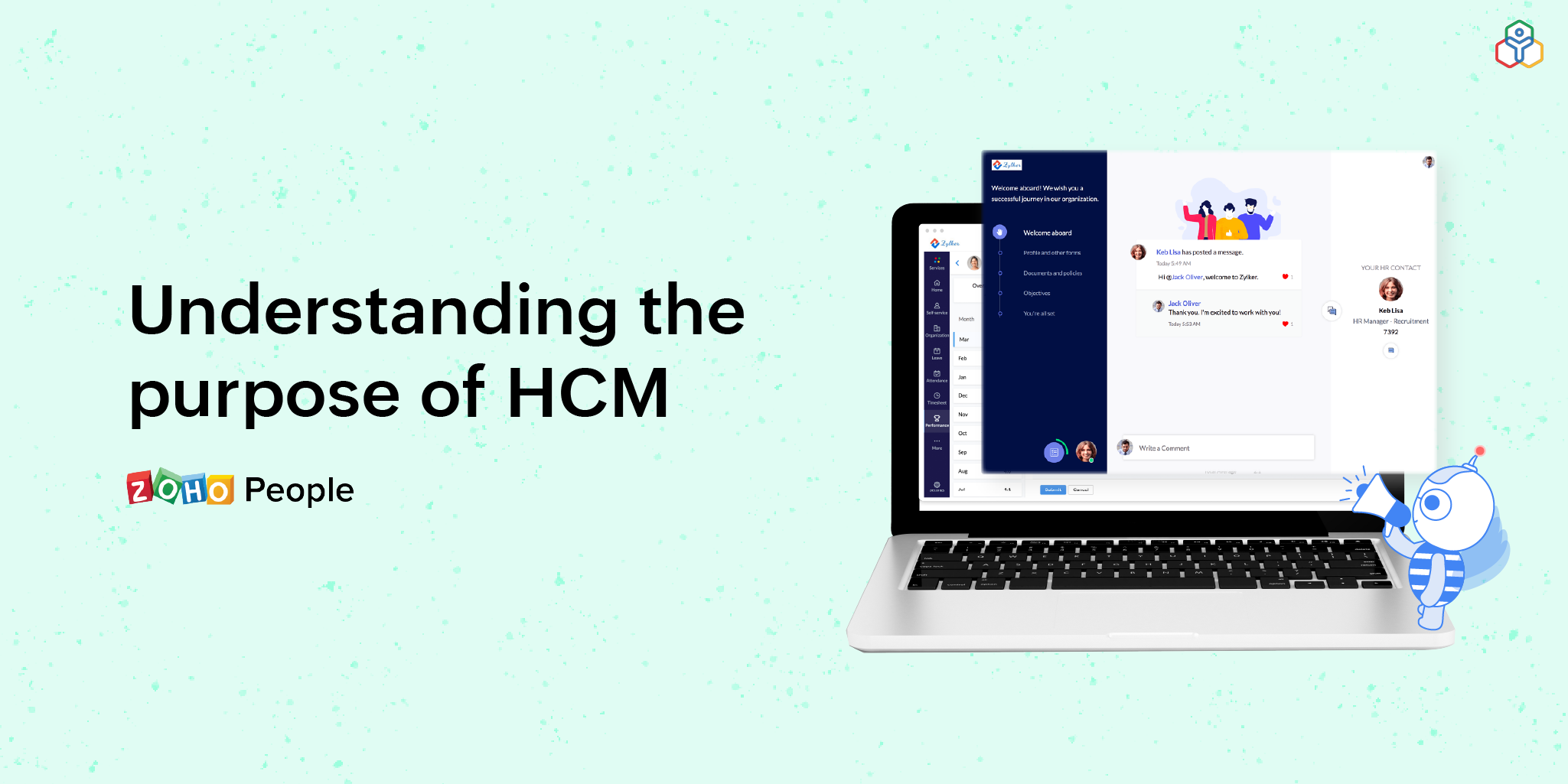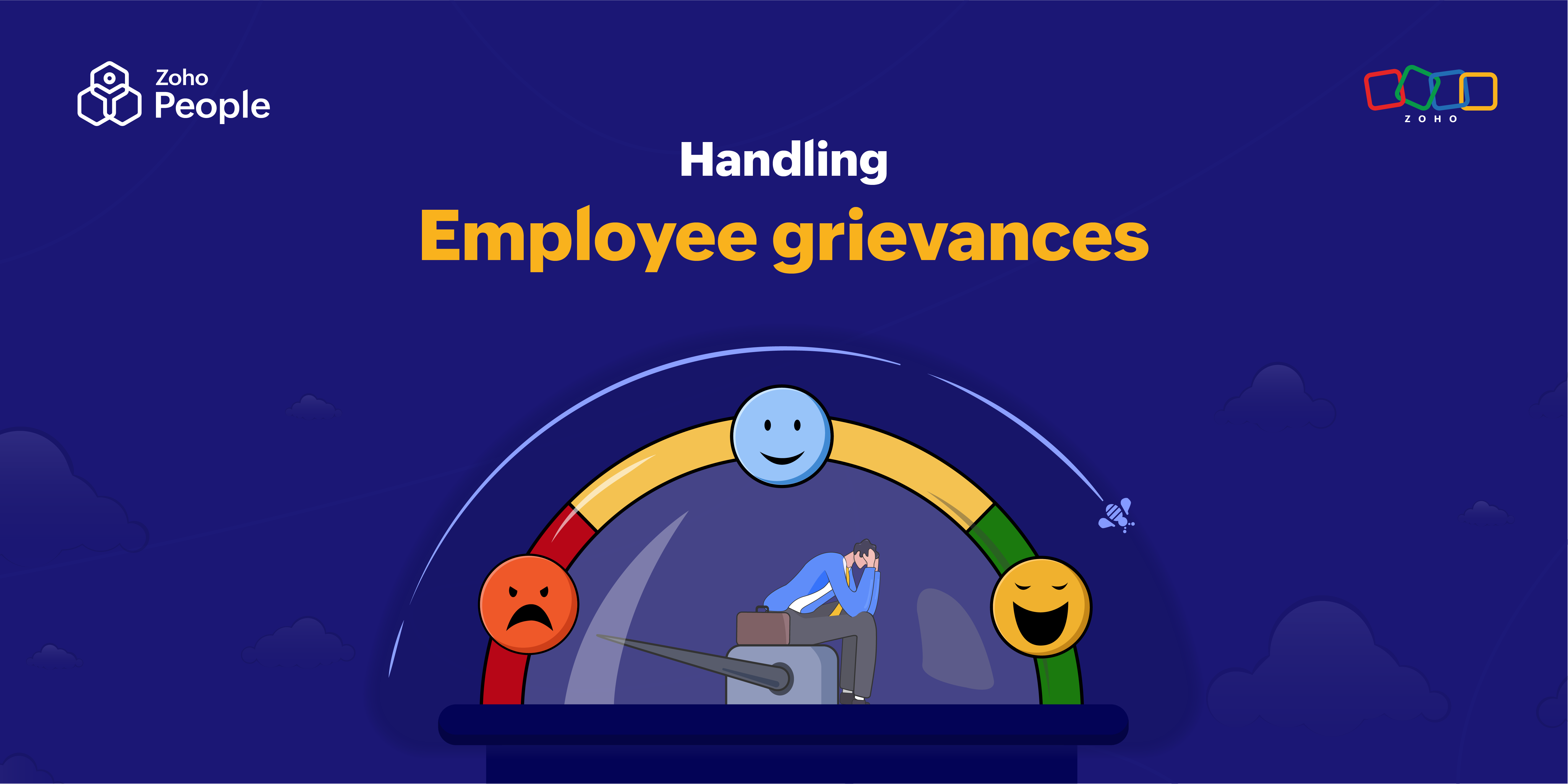- HOME
- More
- On Zoho People
- What is the aim of Human Capital Management?
What is the aim of Human Capital Management?
- Last Updated : August 23, 2023
- 2.9K Views
- 4 Min Read

Your workforce is the greatest asset your organization will ever have. This may sound a bit clichè, but how you manage your employees and help them work really can make or break your business. That's why it's crucial to strategize your employee management practices in a way that maximizes the value offered by each of your people. This is where Human Capital Management (HCM) comes in handy.
By streamlining talent acquisition, management, and development practices, Human Capital Management strategies unlock the full potential of your teams and help them go above and beyond in each project they complete. Organizations implementing HCM strategies understand the importance of enabling employees to grow and work in a way that truly fulfills them.
To be able to use HCM strategies to their fullest capabilities, you need to understand what HCM aims to improve so that you can tailor your management strategies accordingly. Here are the three major aims of human capital management:
Establish a top-notch talent acquisition process
A top-notch talent acquisition strategy is crucial because your organization's growth and development are largely dependent on your employees. The employees you hire and retain can have a huge impact on how your organization serves its customers and how those customers perceive your organization. Without efficient talent acquisition processes in place, it's easier to hire employees whose values are not consistent with the values of your organization. This dissonance means that your employees will have a hard time feeling motivated to work wholeheartedly for your organization and improve its productivity, no matter how hard you try to develop their skills and talent.
HCM strategies prioritize recruiting employees whose passions and expertise align with the work your organization does. For this, you should stay on top of the talent requirements of your organization and analyze how hiring is going to help you achieve your organization's strategic goals. Reaching the right candidates through different online sources, conducting a foolproof interview process, establishing a strong employer brand, providing a seamless onboarding experience, and using people analytics to obtain hiring insights are just some steps that should go into your hiring process.
Also Read: What are the key activities involved in Human Capital Management?
Optimize employee performance
Helping employees improve their performance is necessary for your organization to maintain productivity. Your employees may be extremely talented, but they will inevitably require additional guidance from time to time to be able to maximize their performance and productivity. Otherwise, they may lose their sense of direction and struggle to perform well, despite being skilled.
By leveraging effective constructive feedback and mentoring, HCM aims to optimize employee performance. This means ditching annual performance reviews and adopting continuous reviews instead, designed to analyze employee performance at regular intervals. Before the review, set clear performance metrics so that you can track and measure employee performance accurately and objectively. After analyzing their performance by those numbers, it's important to provide feedback that goes in depth and offers a more qualitative assessment. This is your opportunity to give advice on how to improve, recognize successes, listen to any concerns, offer promotions and rewards, and set a clear action plan for the upcoming period.
Make training and development an innate part of your organizational culture
After the performance review, it can be difficult for employees to channel that feedback into self-improvement without structure training programs. Your managers won't always be able to mentor every employee efficiently, so training acts as additional assistance that helps employees improve their skillsets and contribute more towards your organization.
For instance, as an HR professional, maybe you were initially recruited to advertise job openings. After two years or so, if you were still marketing job openings without exploring the other stages of recruitment, you would feel stuck and demotivated. That's why HCM aims to provide development opportunities that allow employees to take on new responsibilities gradually with adequate training support. This kind of process will help your employees understand the trust you have in them and, as they progress forward in their careers, they will be eager to put those new skills to the test at your organization.
Final thoughts
The ultimate aim of a successful HCM strategy is to improve your organizational growth and success by optimizing your human capital. As we all know, organizational growth is not something that can be achieved overnight. By improving employee performance, identifying top skills, and facilitating development, you can help your employees take your organization to the next level.
Zoho People, our HCM software, works like a charm to help organizations provide a great working experience and with plenty of employee support. A comprehensive onboarding system, intuitive performance reviews, and a seamless training module are a few of the many features that make Zoho People the right solution for implementing your HCM strategies. Learn more about Zoho People.
Also read:What are the challenges of Human Capital Management?
 Tarika
TarikaContent Specialist at Zoho People


